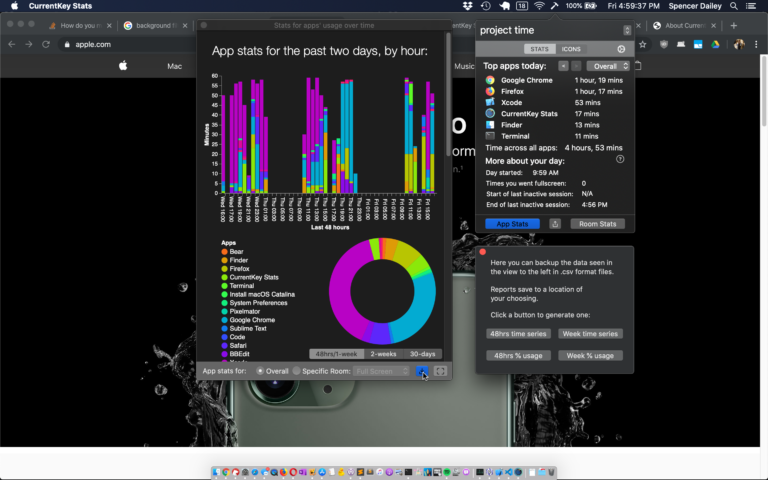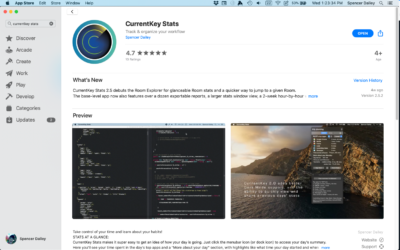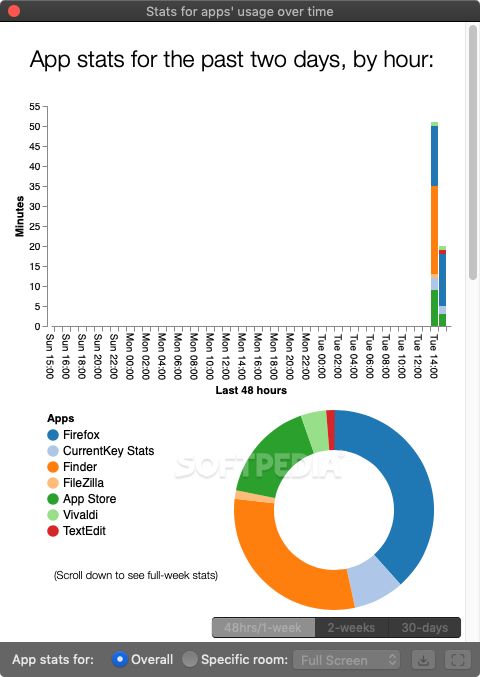
The path hardcoded into the script is also the directory where ck.scpt lives, the default location in CK for the script. TE would thus, at least at first look, fill the requirement of changing desktops for you when you bring the appropriate window to the foreground.Īs you can see from the debugging comments in the script, I tripped over the two different path syntaxes for AppleScript and the shell.
Currentkey stats windows#
Most apps reopen a single window and those that do reopen multiple windows often move them all to the first desktop. TextEdit is one of the few apps where open windows are restored after a reboot in their original desktops. so they become an identifier flag to let you know which desktop you are working in and maybe to identify the thumbnails that get displayed by Mission Control. Either they are as tiny as they can be made and put off in a corner, or even outside the visible area, or they have the name and an icon or symbol, a background color, etc. I've been thinking that I could create TextEdit windows where the doc title is the name given to the desktop workspace, all with a common prefix, so they show up together in lists of active TE windows.
Currentkey stats how to#
His technique seems doable in KBM (but not by me, not any time soon anyway).ĭoes anyone have any ideas for how to create something like Spencer's "little invisible app windows"? That seems a steep learning curve for me. Other apps that succeed in keeping multiple windows, move them all to the first desktop space when rebooting. I can have multiple TE windows on multiple spaces and through reboots and crashes, they stay in the right space, even if they weren't saved.

One thing I have discovered that is joyful in this environment is that the TextEdit is well integrated into desktop spaces.

I still use them, as scratch desktops, but I don't count on anything there being stable. I got so frustrated with what OSX does to that desktop, going back and forth with an external monitor or not, that I dedicated the first screen on each display to being blank. The Blank External desktop is the one that disappears. Unplugged, the first space of the external monitor disappears, I have 20 spaces, and I cannot add any more. I currently have 21 desktops, when I have my external monitor plugged in, and could add more. (I know the guy who invented the concept on SCO UNIX in the mid-1980s, when they called it MultiScreens.) The only way I know how do use a similar workflow on a computer is with desktop spaces, and I've been addicted to them for years. He has a dedicated room in his house with several tabletops full.


I have a friend who is working on 14 books at once. If there is no support in KBM for desktop space changes, I may try building it using AppleScript and CK, managed by KBM, but I'd rather have something closer to "off the shelf". (If you're with me so far, note that CK does not use the Mission Control Desktop numbers, it lets you assign text names to each desktop space and those are persistent if you rearrange the order of the desktops, hence a different term, "rooms".) I cannot find a KBM trigger for "Change Workspace/Desktop".Ĭurrent Key (free desktop management app) will call AppleScript when the desktop space is changed ( Room Change Alerts – CurrentKey Stats) but it only tells the name of the new desktop space ("room" in CK) so that would have to be saved for every space change to know what the previous one is. And it's impossible to do while holding a window in motion to move it to the other desktop space. So far my best alternative is to move the spaces next to each other and then do a 3-fingered swipe left and right on my laptop. Has anyone built a macro to switch to the previous desktop space?


 0 kommentar(er)
0 kommentar(er)
